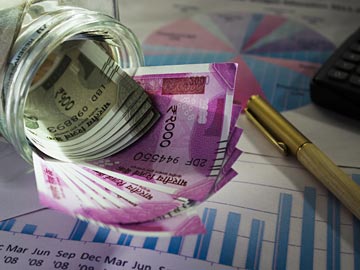Understanding Alternative Minimum Tax (AMT) and Its Purpose
The government provides various tax deductions and incentives to encourage investment in different sectors. While these benefits help businesses grow, they sometimes also allow taxpayers to reduce their tax liability to little or nothing, even when they have the capacity to pay. Since tax revenue is crucial for public welfare and infrastructure, the government introduced the Alternative Minimum Tax (AMT) to collect due taxes especially from those who claim significant deductions in order to maintain a steady flow of revenue to the Government.
AMT applies to non-corporate taxpayers, individuals, HUFs LLPs etc , who utilize certain tax benefits. It ensures they pay at least a minimum tax, even when their normal tax liability is low. The AMT rate is 18.5% of Adjusted Total Income (ATI), which is calculated by making specific additions and deductions to regular taxable income. However, a lower 9% rate applies to units in International Financial Services Centres (IFSCs) which receive income only in convertible foreign currency , and for cooperative societies, the rate had been reduced to 15% (Union Budget 2022). Simply put, individuals and non-corporate taxpayers must pay the higher of the following:
- Tax calculated under the normal provisions of the Income Tax Act 1961
- Alternative Minimum Tax (AMT) at a rate of 18.5%
One key feature of AMT is that taxpayers who pay it in a particular year can carry forward the excess amount as AMT credit. This credit can be used in future years when their normal tax liability exceeds AMT, helping balance the overall tax liability over time.
MAT vs. AMT: Key Differences
Minimum Alternate Tax (MAT) and Alternative Minimum Tax (AMT) are mechanisms designed to ensure that taxpayers benefiting from various deductions and incentives contribute a minimum amount to the government's revenue. While both serve a similar purpose, they apply to different categories of taxpayers and have distinct provisions.
Applicability:
- MAT: This tax is applicable to companies. It ensures that companies availing various deductions linked to their profits and incentives pay a minimum amount of tax.
- AMT: This tax applies to non-corporate taxpayers, including individuals, Hindu Undivided Families (HUFs), partnerships, and others. It ensures that these entities also contribute a minimum tax when they claim certain deductions.
Tax Rates:
- MAT: Entities subject to MAT are required to pay it at a specified rate on their book profits.
- AMT: Entities subject to AMT pay it based on the Adjusted Total Income.
Purpose:
Both MAT and AMT aim to prevent taxpayers from excessively reducing their tax liabilities through deductions and incentives. By implementing these minimum taxes, the government ensures a steady revenue stream and maintains fairness in the tax system.
Applicability of AMT
Alternative Minimum Tax (AMT) ensures that non-corporate taxpayers, such as individuals, Hindu Undivided Families (HUFs), partnerships, and others, contribute a minimum amount of tax. especially when they benefit from certain deductions and exemptions. For HUF, artificial judiciary person or Body of Individuals (BOI), AMT becomes applicable when the adjusted total income is more than ₹20 lakh in a financial year. For any other type of entity, AMT is applicable irrespective of the total income.
AMT applies to non-corporate taxpayers who claim specific deductions under the Income Tax Act. These include:
Chapter VI-A Deductions under Heading C (Sections 80H to 80RRB, excluding 80P):
These deductions benefit industries like hotel businesses, small-scale industries, housing projects, exports, and infrastructure development by reducing taxable profits. However, cooperative societies claiming deductions under Section 80P are not covered under AMT.
Section 35AD (Capital Expenditure for Specified Businesses):
Unlike standard capital expenditures in assets that qualify for yearly depreciation, this section allows a 100% deduction. It applies to businesses like cold chain operations, fertiliser production, and certain infrastructure projects.
Section 10AA (Special Economic Zones – SEZs):
Units operating in SEZs can claim deductions on profits. The deduction is 100% of the export profits that have been obtained via export operations during the first 5 years, 50% of export profits in the next 5 years and 50% of the profit invested back in the business subject to certain terms and conditions in the next 5 years.
If you don't claim these deductions, AMT doesn't apply to you. Also, AMT rules come into play only if the tax calculated under the regular tax system is less than the AMT for a given financial year. However, these provisions do not apply to taxpayers who have opted for the concessional tax regime under Section 115BAD or the new tax regime introduced under Section 115BAC.
Note: Section 115BAD of the Income Tax Act offers resident cooperative societies the option to be taxed at a concessional rate of 22%, subject to the provisions and conditions set forth in the Income Tax Act. Similarly, Section 115BAC allows individuals and Hindu Undivided Families (HUFs) to opt for a new tax regime with reduced tax rates, effective from April 1, 2020, in exchange for relinquishing specific exemptions and deductions.
Exemptions from AMT
AMT provisions generally apply to non-corporate taxpayers, including individuals. However, certain categories are exempt if their annual income is below ₹20 lakhs. These exemptions include:
- Individuals
- Hindu Undivided Families ( HUFs)
- Bodies of Individuals (BOIs)
- Associations of Persons (AOPs)
- Artificial Juridical Persons
Understanding AMT Credit
Alternative Minimum Tax (AMT) ensures that taxpayers who claim significant deductions to reduce tax amount to zero still contribute a minimum tax amount. However, to balance this requirement, the government allows AMT paid in one financial year to be used as a credit in future years when normal tax exceeds AMT. This means if a taxpayer pays AMT in a particular year, they can carry forward the excess and adjust it against their tax liability in later years.
Section 115JD of the Income Tax Act allows taxpayers to claim credit for AMT paid under Section 115JC, which can be carried forward and set off against regular tax liability in subsequent years. The credit can be carried forward for up to 15 financial years but cannot exceed the difference between normal tax and AMT in any given year. Additionally, no interest is earned on the carried-forward credit. If a taxpayer has a Foreign Tax Credit (FTC), only the portion up to the AMT amount is considered, while any excess FTC is disregarded. Also, if the tax department revises the normal tax amount for any year, the AMT credit is adjusted accordingly.
How to Claim AMT Credit?
To use AMT credit, certain conditions must be met:
- The credit can be carried forward and used for up to 15 assessment years.
- No interest is given on the AMT credit amount.
- If the normal tax liability or AMT changes due to any order under the Income Tax Act, the credit amount under Section 115JD will also be adjusted accordingly.
- Taxpayers can utilise their AMT credit in a financial year where their adjusted total income, after deductions under Section 10AA, Section 35AD, or Chapter VI-A, does not exceed ₹20 lakh.
Reporting Requirements for AMT
Taxpayers subject to AMT must secure a certification from a Chartered Accountant. This certification, documented in Form 29C, confirms that the adjusted total income and AMT calculations align with the Income Tax Act's provisions. Form 29C can be submitted electronically by the due date for filing the Tax Audit Report, typically alongside the income tax return.
Form 29C requires details such as the taxpayer's name, address, Permanent Account Number (PAN), assessment year, and a comprehensive computation of adjusted total income and AMT. The Chartered Accountant's verification affirms the accuracy of these computations, ensuring compliance with tax regulations.
Understanding AMT Calculation and AMT Credit with an Example`
Let's say an individual taxpayer has the following income details for two financial years (FY 1 and FY 2):
Step 1: Calculate Adjusted Total Income (ATI)
| Particulars | FY 1 (₹) | FY 2 (₹) |
|---|
Taxable Income (A)
| 18,50,000
| 22,00,000
|
Add: Deduction under Chapter VI-A (B)
| 1,20,000
| Nil
|
Deduction under Section 10AA (C)
| 90,000
| 30,000
|
Deduction under Section 35AD (D)
| 5,00,000
| Nil
|
Adjusted Total Income (E) = (A) + (B) + (C) + (D)
| 25,60,000
| 22,30,000
|
Step 2: Calculate AMT and Normal Tax
| Particulars | FY 1 (₹) | FY 2 (₹) |
|---|
AMT- (18.5% of ATI + 3% cess) (F)
| 4,98,000
| 4,34,200
|
Normal Tax as per slabs (incl. cess) (G)
| 4,15,000
| 4,80,000
|
Final Tax Payable (H) = Higher of (F) and (G)
| 4,98,000 (AMT payable, credit available)
| 4,80,000 (Normal tax payable)
|
Step 3: AMT Credit Adjustment
- In FY 1, since AMT (₹4,98,000) is higher than normal tax (₹4,15,000), the taxpayer pays AMT and earns an AMT credit of ₹83,000 (₹4,98,000 - ₹4,15,000), which can be carried forward for future years.
- In FY 2, since normal tax (₹4,80,000) is now higher than AMT (₹4,34,200), the taxpayer can use AMT credit of ₹45,800 (₹4,80,000 - ₹4,34,200) to reduce their tax liability.
- The remaining AMT credit of ₹37,200 (₹83,000 - ₹45,800) can still be carried forward for up to 15 years.
Final Tax Liability After AMT Credit
| Particulars | FY 1 (₹) | FY 2 (₹) |
|---|
Tax Payable Before AMT Credit
| 4,98,000
| 4,80,000
|
Less: AMT Credit Utilised
| Nil
| 45,800
|
Final Tax Payable
| 4,98,000
| 4,34,200
|
Final Thoughts on AMT
AMT ensures that taxpayers benefiting from deductions still contribute a fair share of tax. While it prevents misuse of exemptions, the AMT credit allows adjustments in future years when the normal tax exceeds the AMT. Understanding its applicability, calculation, and credit utilisation helps taxpayers plan better and avoid unexpected liabilities while complying with tax laws.



























 An ISO 9001:2015
An ISO 9001:2015 

